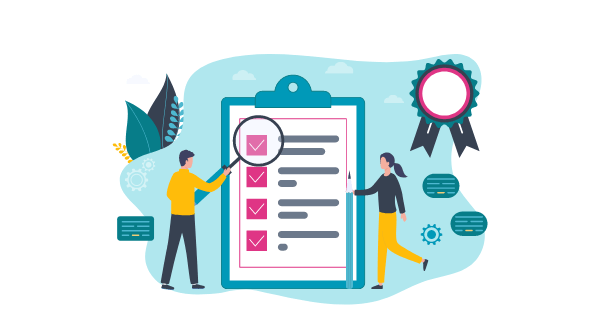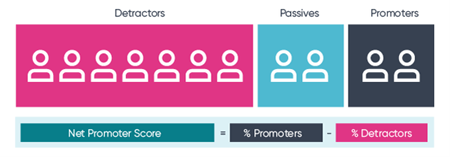3 tips for choosing ISO 9001 KPI targets
ISO 9001:2015 requires you to determine, monitor and measure output by determining ISO 9001 key performance indicator (KPI) objectives for your organization – but how you go about establishing those KPIs is down to you. The standard doesn’t prescribe how or when you should monitor or measure your quality management system, and how to analyze and evaluate your key performance indicator data.
All of these decisions must be made by the organization. So how do can you choose what KPIs to monitor? And how often should you track them?
We are expecting that as the scheduled 2026 revision to ISO 9001 is published, that requirements for determining, monitoring and measuring output will evolve once more. But for now, we will provide some insight into quality KPIs for ISO 9001:2015.
In this article, quality guru Richard Green, founder and MD of Kingsford Consultancy Services, provided us with three tips for choosing your KPIs.

Download our ISO 9001 compliance checklist
Looking for help with ISO 9001 compliance? Download our free checklist, which takes you through each clause of the standard and gives actionable insight on checks to complete to pass your next audit.
Download nowBase your KPIs on your quality objectives
Your quality objectives should be SMART, i.e. specific, measurable, achievable, realistic and time-bound. Clause 9.1.3 “analysis and evaluation” requires the organization to analyze and evaluate appropriate data and information that it has obtained either externally or internally for a variety of pre-defined purposes (linking back to your quality objectives).
It requires you to analyze data and information to evaluate:
- The conformity of your products and services e.g. percentage of reworks or acceptance test results
- The degree of customer satisfaction e.g. net promoter score (NPS)
- The performance and effectiveness of your quality management system (QMS)
- Whether planning has been implemented effectively
- The effectiveness of actions taken to address risks & opportunities e.g. business growth due to identifying new opportunities
- The performance of external providers e.g. supplier rating scorecards
- The need for improvements to your QMS e.g. managing issues
So, as a minimum, you should construct quality management system key performance indicators which evidence the above.
You can choose both qualitative or quantitative key performance indicators
A principal change that was brought in to ISO 9001:2015 is that you must determine the degree (i.e. how much) the customer perceives their needs and expectations have been met. So, how can you obtain and use customer satisfaction information?
You can measure whether customer expectations have been met both quantitatively or qualitatively, for example:
- Net Promoter Score (NPS)
- Satisfaction Benchmark Survey
- Revenue driven by existing customers or customer retention analysis
or
- Feedback forms
- Issue analysis / audit results
- Workshops with customers
Furthermore, clause 6.2 of ISO 9001 requires organizations to set quality objectives for relevant functions, levels and processes within its quality management system. So, it may be that you use different types of feedback for different areas of your organization.

Focus on trends over time
ISO 9001:2008 required evaluation of trends in data or information relating to products and processes. ISO 9001:2015 extended this and explicitly requires top management to consider trends at management reviews.
This means it is necessary to examine performance through time, not just a single point in time. Although the frequency will depend on the context of the organization, for example, a consultancy firm will require a different number of KPI reviews than a medical device manufacturer, a system such as Q-pulse QMS which gathers data from across your organization and notifies relevant parties when there is something outstanding can help provide a robust, systematic and agile system.
So, when determining how often you will review your outputs it is necessary to consider what is reasonable for the context of the organization.
Invest in the right tools to establish and measure ISO 9001 KPIs
Establishing and measuring KPIs is pivotal for maintaining ISO 9001 compliance and achieving quality objectives. KPIs serve as critical metrics that help organizations monitor performance, identify areas of improvement and ensure that processes align with strategic goals.
Utilizing advanced software solutions significantly simplifies the process of managing KPIs. Ideagen’s comprehensive software suite offers functionalities that facilitate the establishment, measurement and analysis of KPIs, ensuring that organizations maintain accurate and up-to-date performance data.
Ideagen’s tools enable seamless data collection from various sources, real-time tracking and dynamic reporting, making it easier to visualize trends and make informed decisions. Their platform provides customizable dashboards that offer a clear overview of key metrics, helping organizations stay focused on their objectives and continuously improve their operations.
By automating KPI management, Ideagen’s solutions reduce manual effort, enhance data accuracy and support ongoing compliance with ISO 9001 standards. This integrative approach ensures that organizations remain agile, responsive, and committed to quality excellence.

Browse more ISO 9001 resources
Interested in more resources that will help you comply with ISO 9001 with ease? Browse our ISO 9001 knowledge hub for free downloads, webinars on demand, informative articles and guides demonstrating how Ideagen’s quality solutions can help you to simplify compliance.
Learn moreTags:
